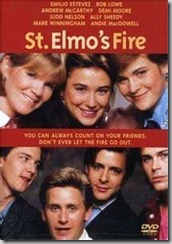Oh, how I wish there was a forum to send a message to every restaurant owner in the country and know it would get read.
Just like my open letter to business owners, this one goes out to any restaurant, bar, or eatery that serves us on Valentine’s Day. STOP. TARNISHING. YOUR. BRAND.
We all know Valentine’s Day is a money maker for you. And it’s so easy to say, “Let’s pack in as many people as we can and do a fixed menu so we can cycle them through faster!” I know margins suck in the restaurant business. I know it’s a tough industry in which to be successful. But do you understand what you’re sacrificing for the quick buck?
The last few Valentine’s Days, my husband and I were so annoyed at pre fixe menus. Like cattle, we were herded into what were supposed to be some of the finer dining establishments and crammed into obviously-added tables, elbow to elbow with the patrons next to us. We were given 3 entrée options that were mass produced and only allowed to select certain wines. It sucked. Many of these restaurants were ones we were trying for the first time (hello? new potential loyal customers?!) and we were so disappointed with that experience, that even though we know it probably isn’t always like that, we have never gone back. The experience soured us on their brand.
My question is: Is ruining your brand for the long-term really worth it?
Just like I don’t understand why churches pack people into hot, sweaty, standing-room-only situations at Christmas and Easter rather than adding new masses – and in the process, making anyone coming for the first time in a while vow never to come back again – I don’t get how you can squander this opportunity to showcase your brand in it’s best light. This is a prime chance to turn first-timers into loyal customers.
We tried to avoid the chaos this year. Thinking we were smart, we went out on Saturday night instead to a place we were so excited about. But they were crafty: they knew people would be going out over the weekend, and therefore had a pared-down Valentine’s menu (albeit with many more choices than a pre fixe) for the whole darn weekend. The food was good, but we felt we didn’t get to try some of the more traditional options we would have liked.
I know you want to make as much money as you can in one night. But at what cost? Do you really want my first impression of your place to be chaos and lack of choice? How likely am I to return? There is a great restaurant here in Seattle that we tried on Valentine’s Day last year. It gets great reviews. The regular menu looked amazing. But we won’t go back. We feel annoyed and gypped by that experience.
Is your long-term brand reputation and increase in your loyal customer base worth sacrificing for one good night of sales? I guess I would ask that questions of anyone who trades brand building for short-term gain.




